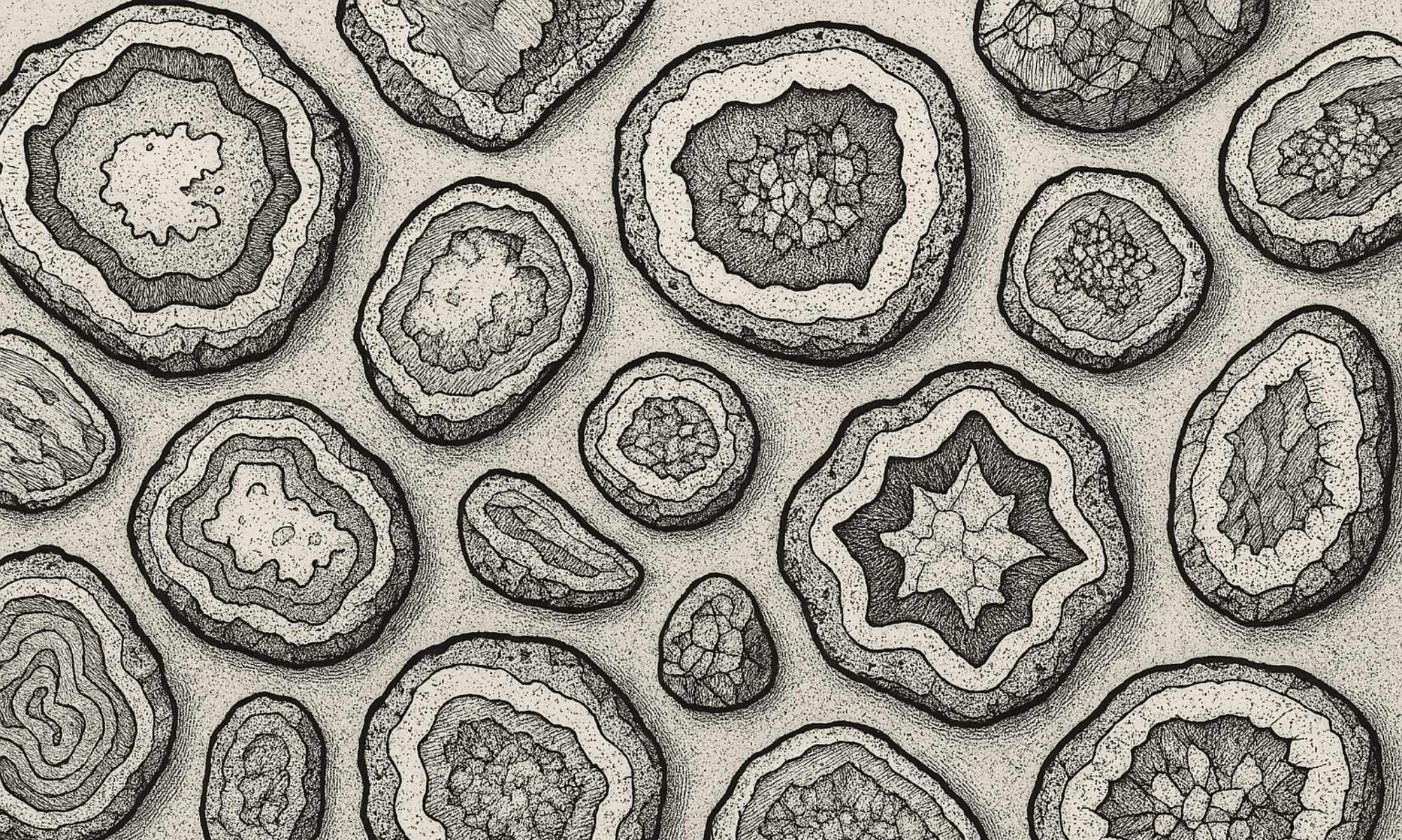African Thundereggs: Volcanic Wonders from the Continent of Contrast
Africa is known for its vibrant landscapes, ancient geology, and stunning gemstones—but buried among the continent’s volcanic terrains are some of the most striking and mysterious thundereggs in the world. Rare, visually dramatic, and often misunderstood, African thundereggs are gaining recognition as serious contenders on the global stage of collectible nodules.
What Are African Thundereggs?
Like thundereggs found elsewhere, African thundereggs form in silica-rich volcanic rocks—typically rhyolite—when mineral-laden fluids fill gas bubbles or fractures created during eruptions. Over millions of years, these cavities crystallize into agate, jasper, quartz, or even opal. The result: an outwardly dull rock with an extraordinary hidden core.
Africa’s geological diversity gives rise to a wide range of thunderegg styles. Depending on the region, they may feature:
- Wild brecciation (fractured and healed patterns)
- Bold color contrasts (reds, blacks, purples, creams)
- Fine banded agate or jasp-agate mixes
- Opalized or chalcedony-filled centers
Where Are African Thundereggs Found?
African thundereggs aren’t as widely distributed as in North America or Europe, but a few notable localities have produced exceptional specimens:
- Ethiopia – Possibly the best-known source so far, with nodules showing colorful jasp-agate interiors, occasional fortification patterns, and deep reds and yellows. Some beds are near known opal fields, adding even more collector interest.
- Morocco – While better known for fossils and vanadinite, Morocco has yielded thunderegg-like nodules from its volcanic zones—often with mossy or brecciated textures.
- Namibia – A sleeper source, some rhyolite beds in Namibia have produced dense, finely banded thundereggs with muted but elegant color zones.
- Kenya and Tanzania – Largely unexplored for thundereggs, but scattered finds suggest potential. The volcanic history in the Rift Valley makes this a promising area.
Note: Not all agate nodules or rhyolite concretions from Africa are “true” thundereggs, but many share structural similarities and are collected and cut as such.
Why Collect African Thundereggs?
- Scarcity – African thundereggs are still rare on the international market. Most are sold by local miners or enter global trade through lapidary dealers with African connections.
- Dramatic Patterns – Many specimens are full of motion—lightning-like fractures, wild color flow, or stark contrast between matrix and fill.
- Cutting Potential – The hard silica content makes them ideal for polishing, and when cut, they reveal interior scenes just as vivid as any from Oregon or Germany.
For lapidary artists, African thundereggs offer a new palette to explore. For collectors, they’re an investment in geological diversity—specimens that are both beautiful and historically underrepresented.
Things to Watch For
- Inconsistency – Many African thundereggs are highly variable, even within the same batch. One rock might be brilliant; the next, bland.
- Export Restrictions – Some countries tightly regulate mineral exports. Buying from reputable dealers ensures that what you’re getting is legally sourced.
- Mislabeling – As with Asian thundereggs, African nodules are often confused with other agate-filled rocks. If possible, learn the telltale exterior textures of rhyolitic thundereggs.
A Hidden Frontier in Rockhounding
Africa’s thundereggs represent a kind of frontier material—understudied, undercut, and deeply intriguing. As more collectors look beyond the classics and seek out new material, African thundereggs are carving out their niche in the market.
If you’re lucky enough to get your hands on a few, you’re holding not just a rock, but a story millions of years in the making—shaped by ancient eruptions, hidden beneath savannahs and mountains, and finally revealed on your saw table.
